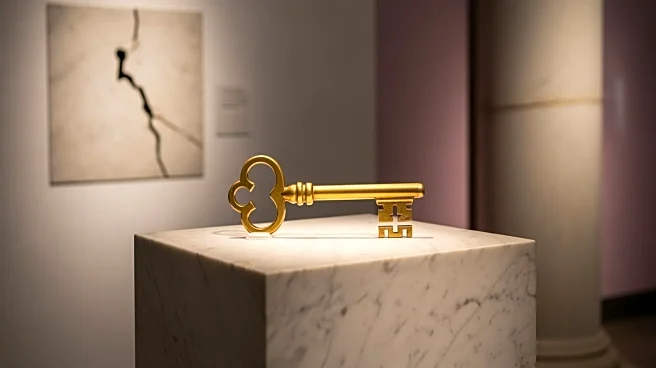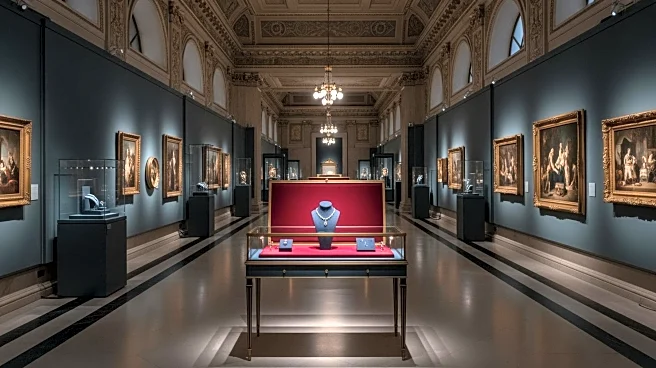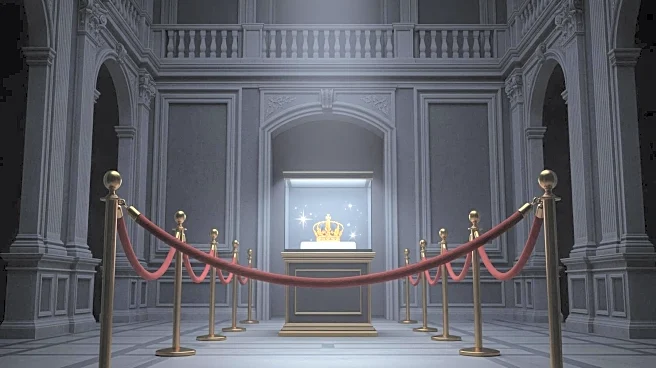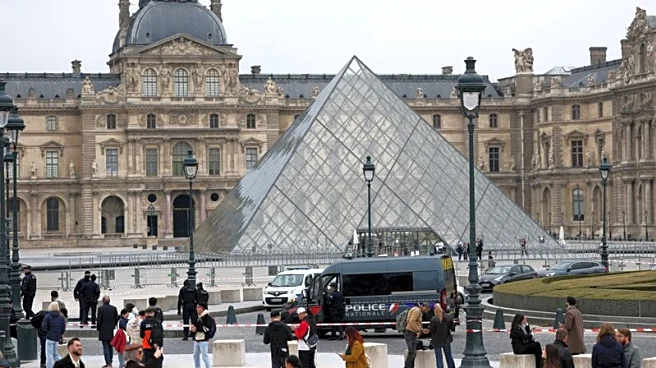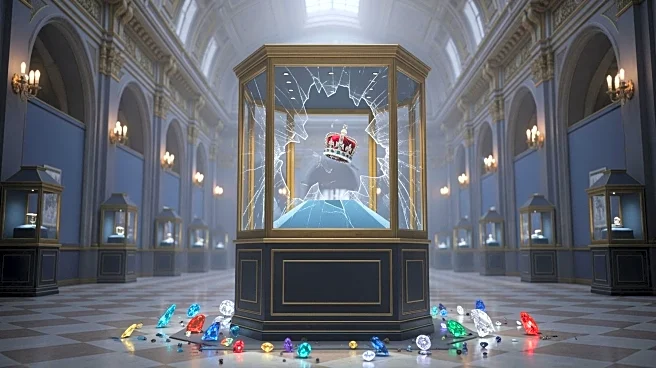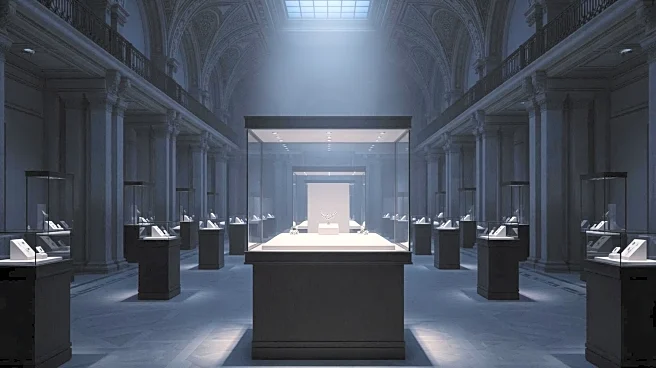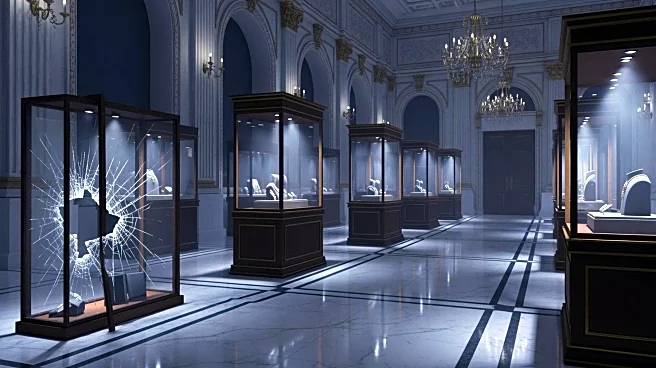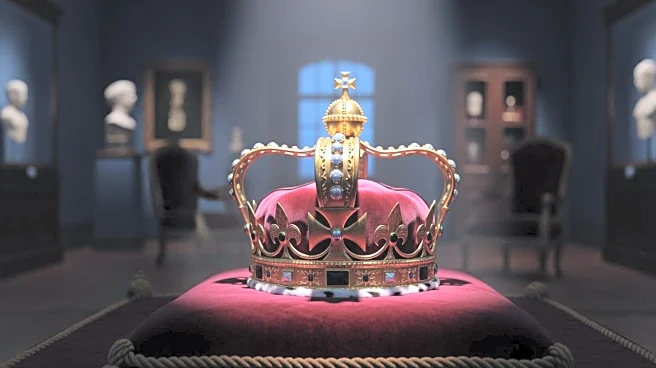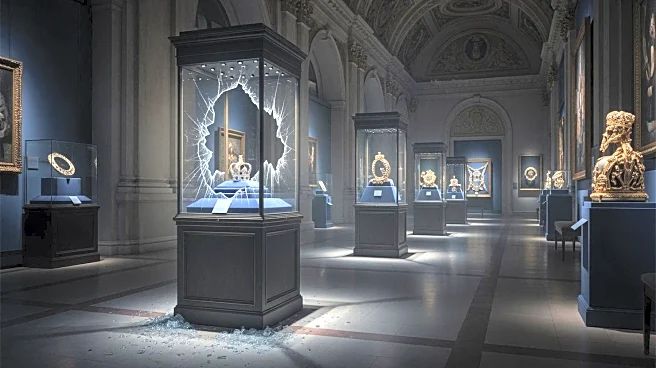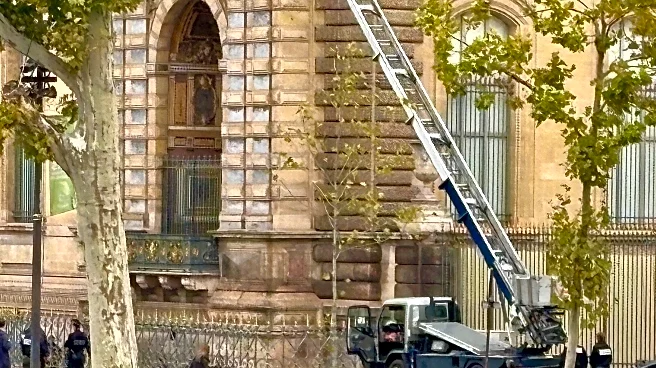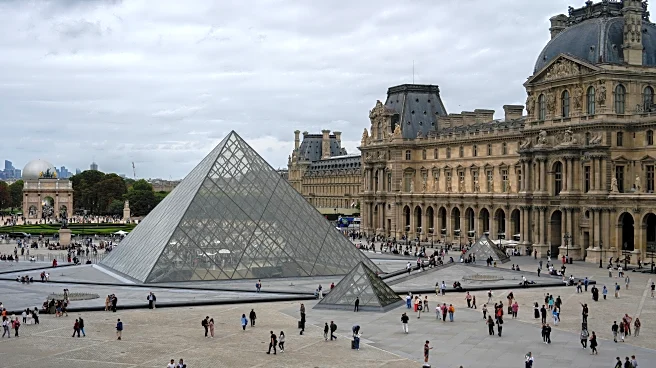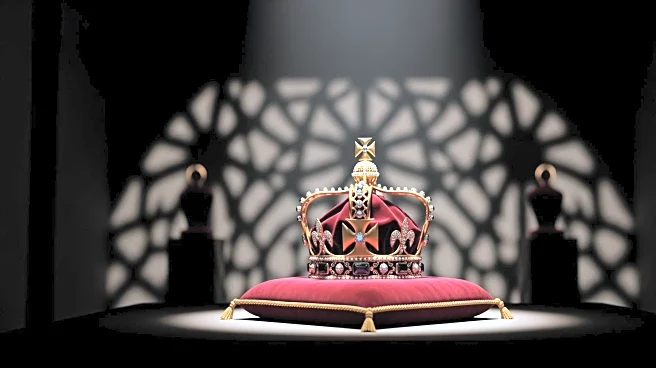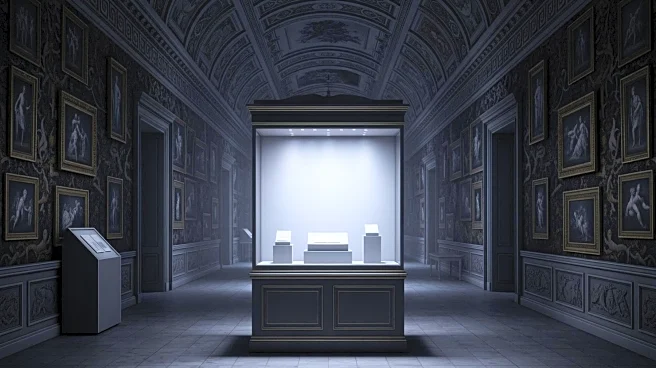What's Happening?
The Louvre Museum in Paris recently experienced a significant jewelry heist, where thieves managed to steal valuable items from the Apollo Gallery in a swift seven-minute operation. The robbery, which included an attempt to steal the crown of Empress
Eugénie, resulted in the crown being damaged but ultimately recovered outside the museum. This incident is part of a series of challenges facing the Louvre, including structural deterioration and overcrowding. The museum, which welcomed 8.7 million visitors last year, is struggling with issues such as water leaks, temperature fluctuations, and inadequate visitor services. A confidential letter from the museum's president, Laurence des Cars, to Culture Minister Rachida Dati highlighted these concerns, urging for urgent assistance to address the museum's deteriorating condition.
Why It's Important?
The challenges faced by the Louvre Museum have broader implications for cultural tourism and heritage preservation. As one of the most visited museums globally, the Louvre's ability to maintain its infrastructure and provide a quality visitor experience is crucial for sustaining its status as a cultural icon. The heist and ongoing structural issues could deter tourists, impacting the local economy and France's cultural reputation. Additionally, the museum's struggles highlight the need for investment in cultural institutions to preserve historical artifacts and ensure their accessibility to the public. The situation underscores the delicate balance between preserving cultural heritage and accommodating large numbers of visitors.
What's Next?
In response to the challenges, French President Emmanuel Macron announced plans for major renovations at the Louvre, including a dedicated room for the 'Mona Lisa.' These renovations are expected to take up to 10 years, aiming to improve visitor experience and address structural concerns. The museum's management may also need to implement measures to enhance security and manage visitor numbers to prevent future incidents. Stakeholders, including government officials and cultural organizations, will likely engage in discussions on funding and strategies to support the museum's long-term sustainability.
Beyond the Headlines
The Louvre's situation raises questions about the ethical responsibilities of cultural institutions in balancing preservation with public access. The museum's challenges reflect broader issues faced by many cultural sites worldwide, where increasing tourism pressures can lead to deterioration and security risks. This scenario may prompt a reevaluation of how cultural heritage sites are managed and funded, potentially leading to new policies and practices that prioritize both conservation and visitor engagement.
